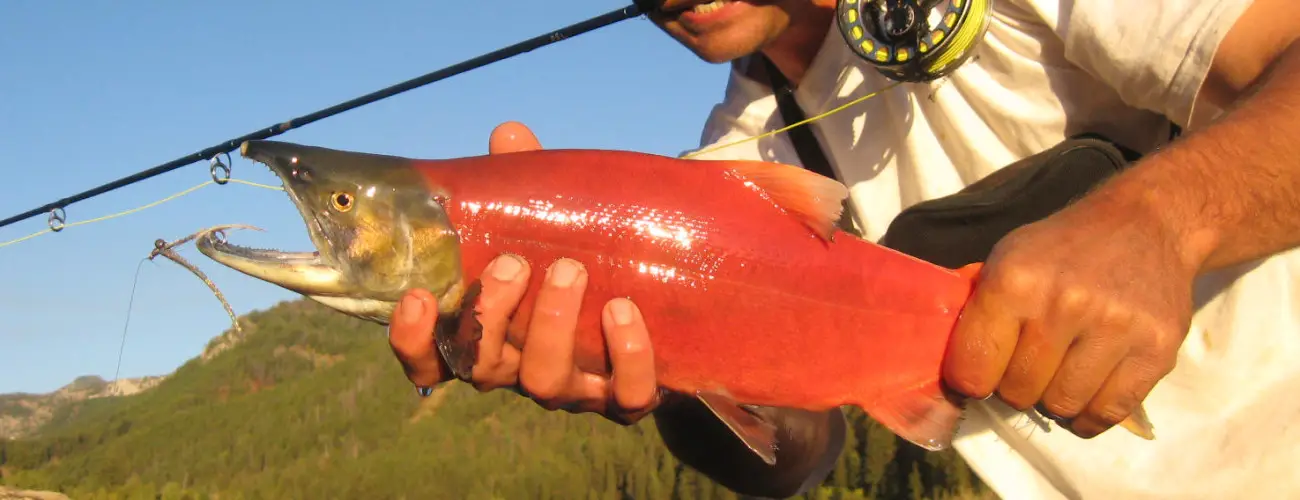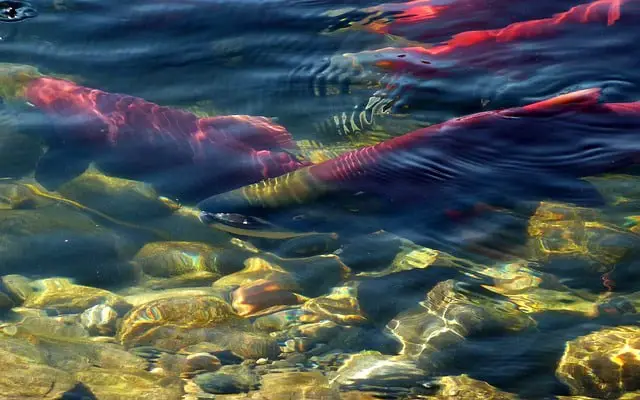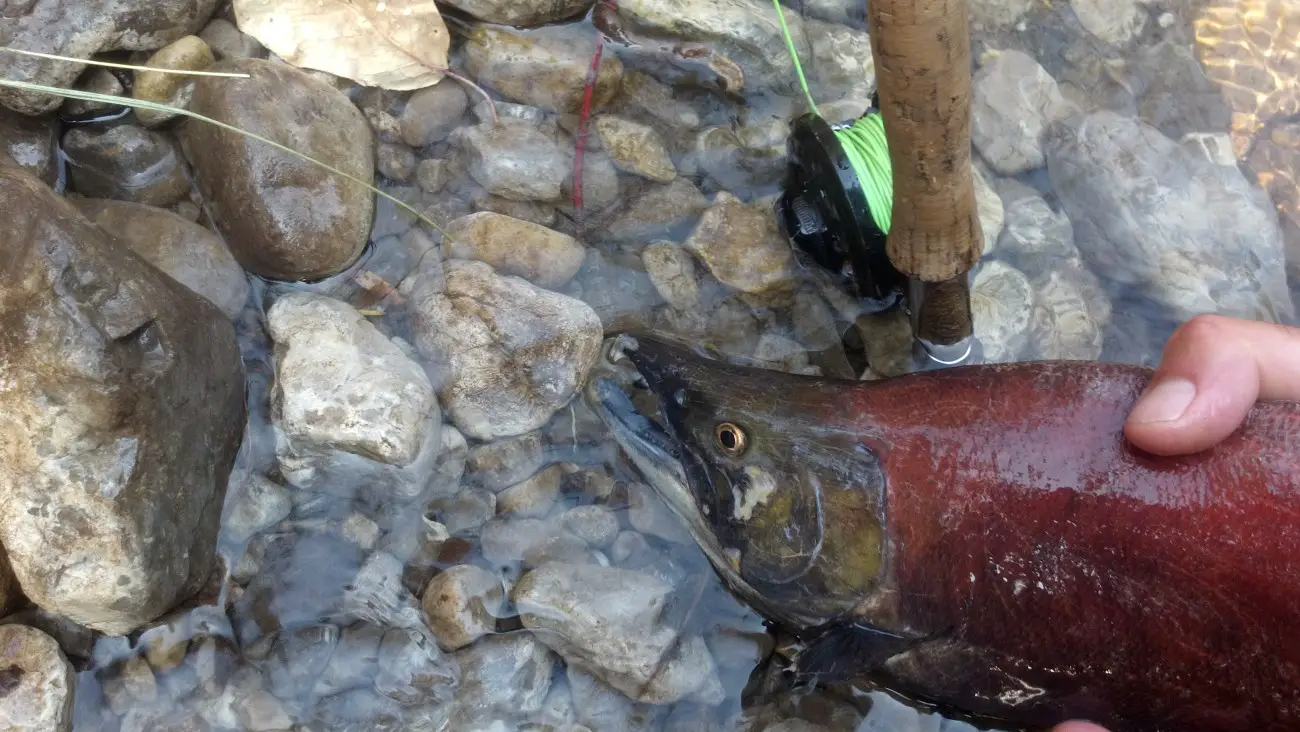 Guide to Sockeye Salmon
Guide to Sockeye Salmon
Sockeye salmon are Northern Pacific natives also known as “red salmon” or “blueback salmon”. If you’re interested in sockeye fishing, it can be helpful to understand them, so here’s a quick overview of everything you might want to know!
Where They Live
Sockeyes are one species of the wide salmon variation found in the Northern Pacific Ocean and the rivers that feed from it. This means they’re often found close to Alaska, Washington, Oregon, and California, as well as near Japan and Siberia on the other side of the ocean. Some sockeye populations are completely landlocked, mostly due to human introduction into lakes. Lakes as far east as North Carolina have been stocked with sockeyes.
Size
The sockeye is relatively light, averaging 8 pounds, though they can reach a length of up to three feet. The world record weight of a sockeye is only 15.3 pounds—the size of a small Chinook!
Appearance
Like many salmon, sockeyes look completely different based on whether they’re living in saltwater or freshwater. In the ocean, they have silver sides and blue backs (hence one of their alternate names), but while breeding in rivers, the sockeyes turn bright red with a green head. One easy way to tell them apart from other salmons is to look for a lack of spotting on the back and head. Most other types of salmon have black spots in this area, but sockeyes do not. The shape of the head of sockeye also differs from other salmon species.

Spawning Habits
Sockeyes, like other salmon, always attempt to return to the stream, lake, or river of their birth. Most of this type of salmon like to stay in or near lakes—they’re the only salmon species that prefer lakes over creeks and tributaries. Because of this, sockeyes are typically found in rivers that have access to lakes. Females create three to five separate nests and lay eggs in each of them to ensure the best chance of survival for at least some of her young.
Life Cycle
Eggs hatch six to nine weeks after they are laid. The young salmon remain in their birth lake for one to three years. Once their gills begin to change and make it possible for them to process saltwater, the sockeyes begin their migration journey out to the deep sea. On average, the fish remain in the ocean for two years, then return to spawn when they are four or five years old. Upon spawning, they die.
Behaviors
Sockeyes are the type of salmon most obsessed with status and hierarchy. This is especially evident during mating season, when males compete to win the most mates. Typically the “alpha” males are the ones with the longest bodies and the largest dorsal humps. Females guard their nests, while males simply fertilize them and then abandon them. Sometimes sockeyes also compete amongst themselves for food, but this mostly happens in lakes. Once they’re in the ocean, sockeyes become more collaborative and swim in schools.
Feeding Habits of the Sockeye
In lakes, young sockeyes initially stick to insects and plankton, but as they grow, they begin to also feed on amphipods, squid, and smaller fish. In the ocean, their diet is mostly based around zoo plankton, which makes them unique from other types of Pacific salmon.
Predators
Some of the most significant sockeye predators are brown bears and seagulls. Due to their small size, they are also targeted by larger fish who see them as an easy meal.

Human Consumption
Sockeyes are one of the most prized types of salmon, due to their natural bright orange meat. Since they tend to be on the smaller side, it’s also harder to see high amounts of sockeye meat on the market, which limits supply and feeds demand. 100 grams of sockeye contains 153 calories, 22 grams of protein, and 7 grams of fat. The meat is also high in all the B vitamins.
Fun Facts
• The term “sockeye” has nothing to do with socks or eyes! It is a phonetic English variation of a word developed by indigenous Canadian peoples, “suk-kegh”. The word is translated as “red fish”.
• Sockeyes are the third most abundant salmon species in the Pacific.
• They are the most important species to the economy of Alaskan commercial fisheries.
